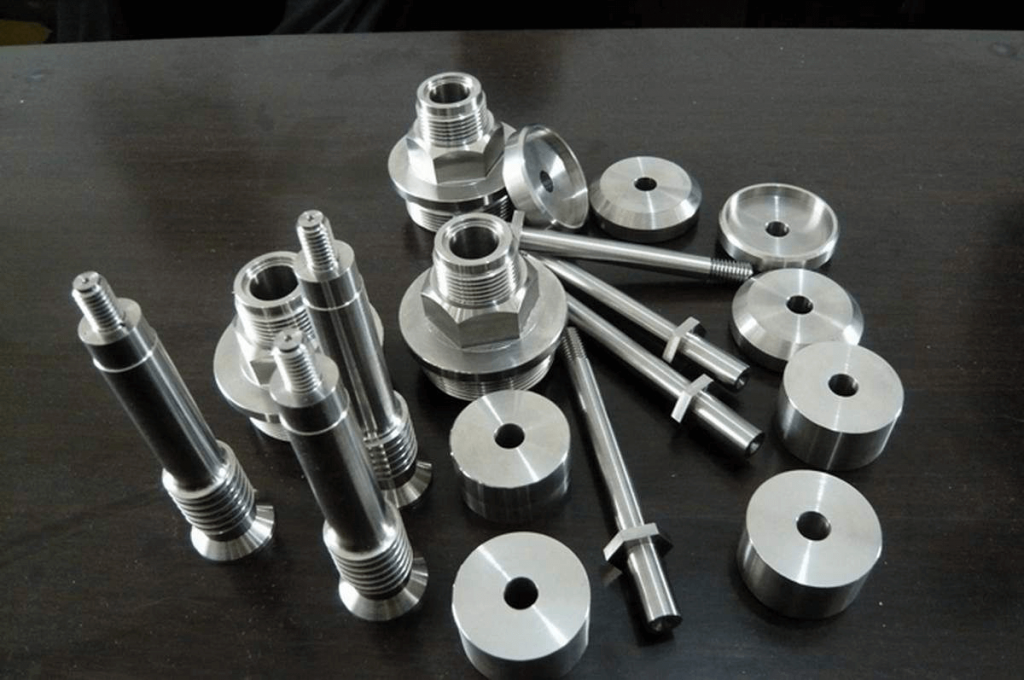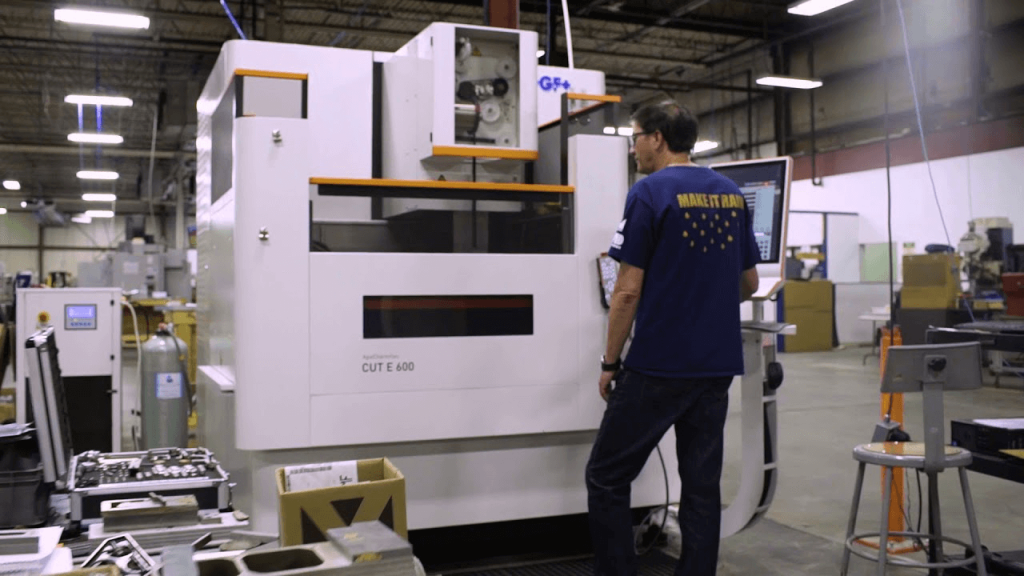ชิ้นส่วน CNC Rapid Prototype: ข้อดีและข้อเสียของการใช้เครื่องจักรกลซีเอ็นซี
ชิ้นส่วน CNC Rapid Prototype: ข้อดีข้อเสียของการใช้เครื่องจักรกลซีเอ็นซี
ข้อดีของการใช้เครื่องจักรกลซีเอ็นซี
ตอนนี้การสร้างต้นแบบอย่างรวดเร็วเป็นผู้นำในอุตสาหกรรมการผลิต มีเทคนิคหลายประการในการสร้างต้นแบบที่มีคุณภาพสูงแม่นยำและใช้งานได้จริง เทคนิคต้นแบบอย่างรวดเร็วของชิ้นส่วน CNC เป็นหนึ่งในนั้น เทคนิคการใช้เครื่องจักรกลซีเอ็นซีเพื่อสร้างต้นแบบที่ใกล้เคียงกับผลิตภัณฑ์จริงมาก
Below, we are going to talk about the advantages and the disadvantages of prototyping via CNC machining. So, without any further delay, let us get started!
Merits and Demerits
For starters, let us focus on the advantages of prototyping using the CNC machining.

Advantages of CNC Rapid Prototype
File to Prototype
With CNC machining it is possible to effortlessly transfer your ideas from file directly to 3D prototypes. After all, CNC machining is a digital technique responsible for creating parts using computer file information. Therefore, the engineers are sure that the machining prototype would be close to the digital 3D design.
It is possible to use the same design with the same dimensions to create the final parts. With CNC machining, the degree of repeatability is impressive and high. In addition, when using digital designs, it is extremely easy to make alterations.
Incase there is a problem with the machined prototype. For example, it exhibits a certain physical deformity. The engineers would head back to the CAD software and make all the required changes to eliminate the errors in the next prototype.
It is possible to create multiple versions side by side. Furthermore, the simulation software would help identify how a certain part would work in the real world.
Consistency and Quality
We understand that there is no perfection in the real world, even the computers are not perfect. However, the machinery controlled by the computers tend to function exactly as they are directed to do so, unless there is some error or it breaks down.
There are several prototypes processes that rely on human skill, in that case, there is always a chance of error. CNC machining, on the other hand, is a fully automated process. It would follow the guidelines to perfection.
What more is that the technique ensures high-equality repeatability accuracy. It means that it can yield the same result over and over without any difference. Since the machine can run the same job the second time with minimal changes, therefore, it is an excellent choice for the prototype’s new iterations.
After all, with automated machinery, manufacturers are able to guarantee consistency. Something that is imperative not only for CNC parts Rapid Prototype manufacturing, but also for mass production.
Range of Strong Materials
In case the prototype does not have any mechanical purpose, it is wise to use a 3D printing technique for its creation. After all, 3D printing is an effective technique to create prototypes. It offers high-strength part and it affordable.
Using 3D printing, you can create prototypes overnight. However, when it comes to material options, the 3D printing techniques of limited material options especially in comparison to the machining techniques.
With CNC machining, you gain access to a range of compatible materials. These materials offer robustness, quality and durability. The material range also includes a number of metals. The table below shows some of the CCN machining materials.
| Metals | Plastics |
| อลูมิเนียม | ABS |
| Stainless Steel | PP |
| Steel | PC |
| แมกนีเซียม | PS |
| สังกะสี | PMMA |
| Titanium | POM |
| Bronze | PCGF30 |
| Brass | PAGF30 |
| ทองแดง | Teflon |
| HDPE | |
| LDPE |
Parts Rapid Prototype is Similar to Final Part
One of the major advantages of using a CNC machining for prototype creation is that it generates prototypes that are extremely similar to the final parts. After all, these machines are capable of creating end users’ products along with prototypes, therefore, the prototypes will be close to the actual product.
This is something that other prototyping techniques are unable to achieve thus far. One reason behind this is the diversity in terms of materials. As some materials are extremely machinable, thus they allow the engineers to create prototypes using similar to the same material that is required for the final part.
Moreover, the machined parts are robust and they don’t exhibit any sort of weakness. Creating prototypes that are close to the actual product in terms of looks and functionality reduces the time to market. Mainly because you will not have to make any changes in the final product as the prototype is really close to it.
Disadvantages
Despite all the advantages it offers, the CNC machining technique has some limitations.
Expensive
เมื่อเปรียบเทียบเทคนิคการตัดเฉือน CNC กับเทคนิคการพิมพ์สามมิติมีราคาแพง หลังจากที่ศูนย์เครื่องจักรกลทุกแห่งต้องใช้เครื่องจักรจำนวนมากและเครื่องจักรนี้ต้องใช้พลังงานและพลังงานจำนวนมากในการทำงาน
นี่อาจเป็นสาเหตุหลักที่บางครั้งวิศวกรชอบใช้การพิมพ์ 3 มิติในการสร้างต้นแบบ แม้ว่าพวกเขาจะใช้เครื่องจักรในการผลิตจำนวนมาก
ข้อ จำกัด ทางเรขาคณิต
แม้ว่าศูนย์เครื่องจักรกล 4 แกนและ 5 แกนจะมีความยืดหยุ่นทางเรขาคณิตมาก อย่างไรก็ตามสิ่งเหล่านี้ยังไม่เพียงพอโดยเฉพาะอย่างยิ่งเมื่อต้นแบบต้องการโครงสร้างที่ซับซ้อนซึ่งมีรูปทรงเรขาคณิตภายในที่ซับซ้อนมาก
ในกรณีนี้เราขอแนะนำให้คุณเลือกใช้กระบวนการผลิตแบบเติมสาร กระบวนการนี้มาพร้อมกับข้อ จำกัด ที่ จำกัด และจะช่วยให้คุณได้ผลลัพธ์ตามลำดับ

เศษวัสดุ
This is perhaps the biggest problem with CNC parts rapid prototyping manufacturing. Being it a subtractive process, a higher quantity of material is required. However, not all the amount of material is utilized.
Some of the material is wasted and it ends up as plastic or metal chips. ผู้ผลิต then have to dispose of these chips. However, this is not the case of the additive prototyping process. They do not have any material wastage until there is a print failure and the process need to be repeated.
ดังนั้นเมื่อคุณใช้กระบวนการสร้างต้นแบบการตัดเฉือนจะทำให้ต้นทุนวัสดุสูงขึ้น สาเหตุหลักมาจากปริมาณวัสดุที่ใช้สูงพร้อมกับการสูญเสีย อย่างไรก็ตามเพื่อลดการสิ้นเปลืองวัสดุผู้ผลิต จึงไม่ได้มองหาวิธีการรีไซเคิลชิปอย่างมีประสิทธิภาพ
การขายวัสดุรีไซเคิลยังช่วยในการชดเชยต้นทุนวัสดุ



